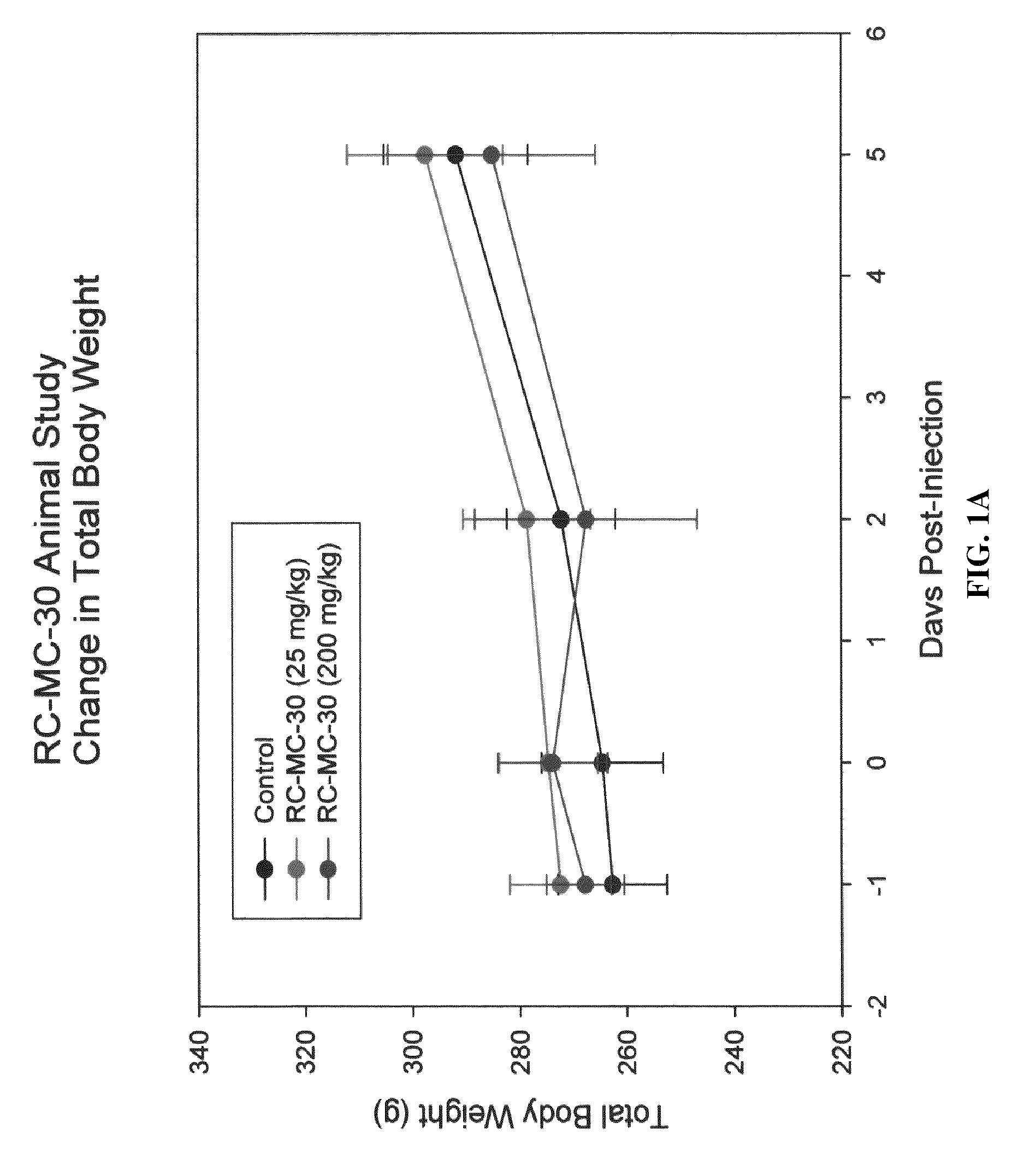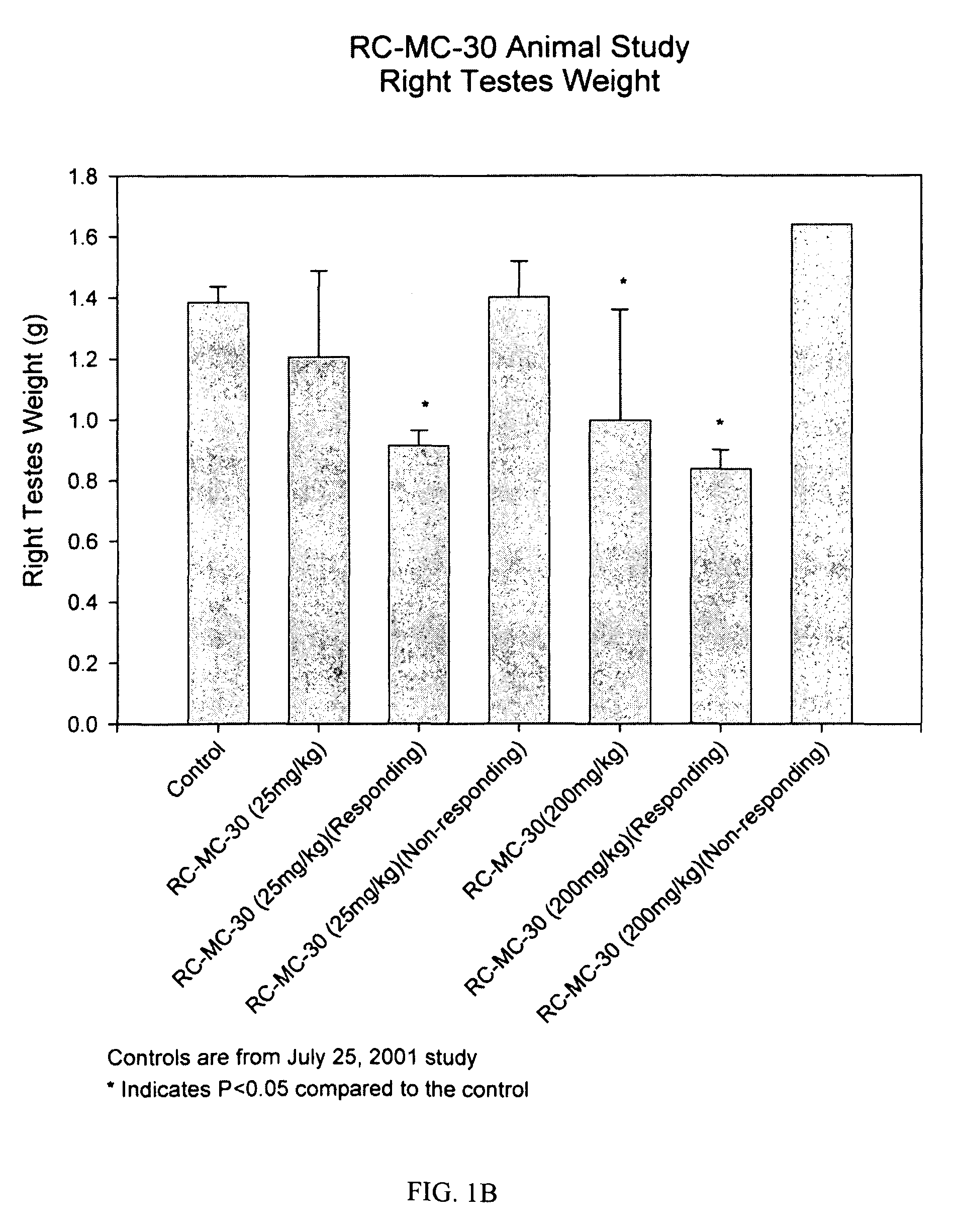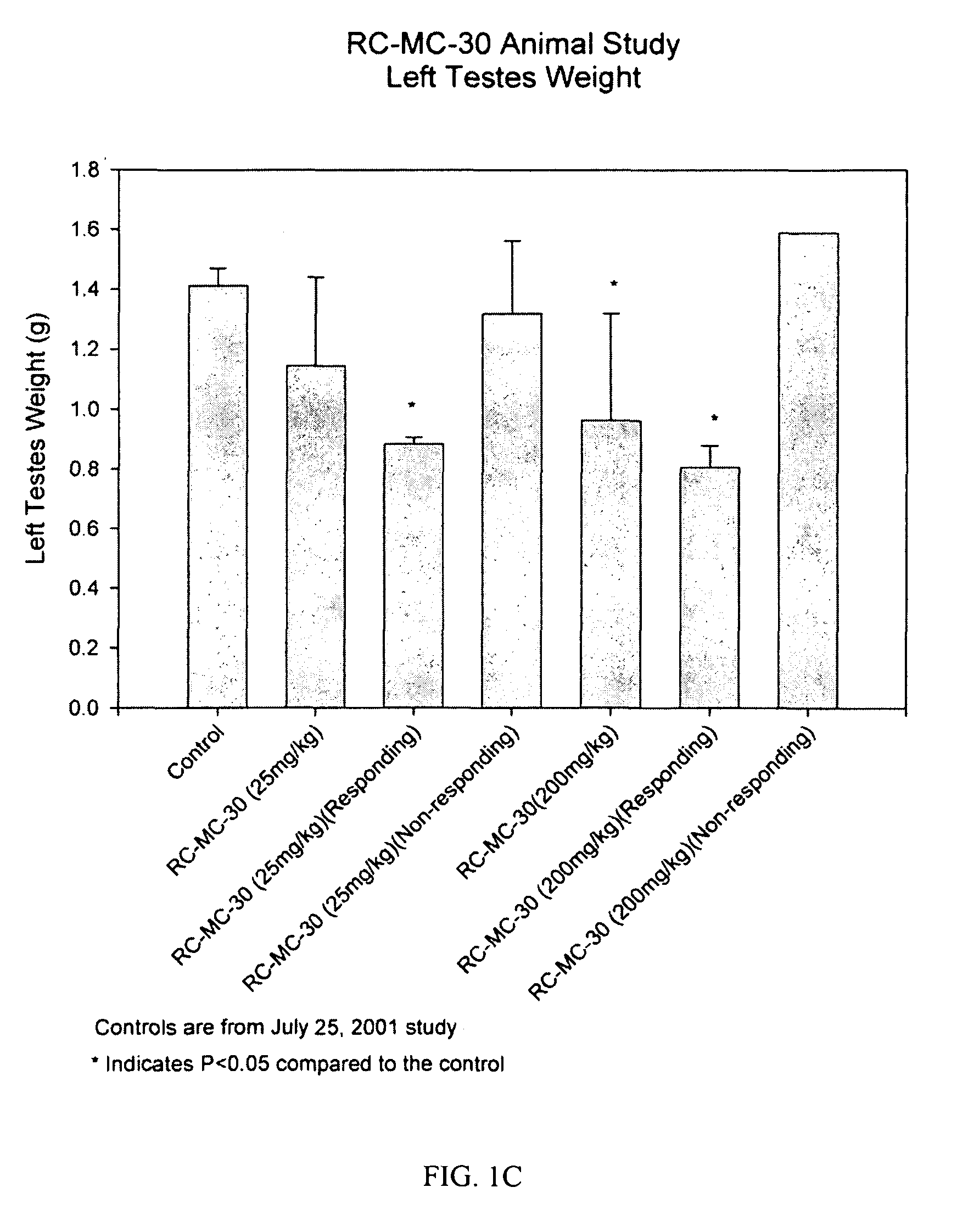Lonidamine analogues and treatment of polycystic kidney disease
a technology of lonidamine and polycystic kidney disease, which is applied in the field of new analogues of lonidamine, can solve the problems of total loss of kidney function, liver damage, pancreas damage, etc., and achieve the effect of treating, inhibiting, and/or preventing polycystic kidney disease, and inhibiting the development of polycystic kidney diseas
- Summary
- Abstract
- Description
- Claims
- Application Information
AI Technical Summary
Problems solved by technology
Method used
Image
Examples
example 1
Synthesis of 1-(2,4-dichlorobenzyl)-1H-indazole-3-carboxylic Acid Methyl Ester (RC-MC-30)
[0422]For the synthesis of RC-MC-30, methyl indazole-3-carboxylate was first formed. Acetyl chloride (7 mL, excess) was added dropwise to ice-cooled methanol (20 mL) and the solution was stirred at the same temperature for 10 minutes. Commercially available indazole-3-carboxylic acid (2.3 g, 14 mmol) was then added to the solution in one lot and the mixture was allowed to warm to room temperature and stirred overnight. The solvent was removed under vacuum, then the residual solid was dissolved in CHCl3 (100 mL), and washed with std. NaHCO3 solution. The aqueous layer was extracted with CHCl3 and the combined organic extract was washed with brine and dried over anhydrous Na2SO4. Removal of solvent left the product as a light yellow solid. Yield=2.05 g (85%); m.p.=168°-170° C.; 1H NMR (400 MHz, CDCl3) δ 8.25 (d, J=8.8 Hz, 1H), 7.89 (d, J=8.8 Hz, 1H), 7.50 (t, J=7.8 Hz, 1H), 7.37 (t, J=7.8 Hz, 1H),...
example 2
Synthesis of 3-[1-(2,4-dichlorobenzyl)-6-trifluoromethyl-1H-indazol-3-yl]-acrylic Acid (RC-MC-110)
Step 1: 2-(2-nitro-4-trifluoromethylphenyl)-malonic Acid Dimethyl Ester
[0426]
[0427]Dimethyl malonate (59.7 g, 0.44 mol) was added dropwise to a stirred solution of potassium tert-butoxide (51 g, 0.44 mol) in dry t-butanol (500 mL). To the resultant suspension, a warm solution of 2-chloro-5-trifluoromethylnitrobenzene (50 g, 0.22 mol) in t-butanol (100 mL) was added and the mixture was refluxed for 6 h (reaction monitored by TLC). After completion of the reaction, most of the t-butanol was distilled off under vacuum, and chilled water was then added to the reaction mixture. The pH was adjusted to neutral with dilute hydrochloric acid, which resulted in the precipitation of the product. The mixture was stirred for 30 minutes and the product was filtered off (68 g, 95%). This material was used without further purification in the next step. A small amount was crystallized (EtOAc / hexane, 4:6...
example 3
Synthesis of 1-(2,4-dichlorobenzyl)-1H-pyrazolo[3,4-b]pyridine-3-carboxylic Acid (RC-MC-86)
Step 1: 1-(2-Chloropyridin-3-yl)ethanol
[0449]
[0450]Dry THF (400 mL) and n-butyllithium (1.6 M in hexane, 63 mL, 0.1 mol) were introduced into a 1 L flask under nitrogen at −70° C. A solution of dry diisopropylamine (10.1 g, 0.1 mol) in THF (25 mL) was added dropwise to the mixture at −70° C. The mixture was then kept for 1 h at 0° C. and then cooled to −70° C. A solution of 2-chloropyridine (11.3 g, 0.1 mol) in THF (25 mL) was added dropwise to the mixture at −70° C. and the mixture was stirred for 3 h at this temperature. A solution of acetaldehyde (4.85 g, 0.11 mol) in dry THF (50 mL) was then added dropwise and the mixture was kept for 3 h at −70° C. A solution of water (4 mL) in THF (40 mL), acidified by a few drops of concentrated hydrochloric acid, was added to the mixture at −40° C. and then water (200 mL) was introduced at −10° C. Extraction with diethyl ether (3×150 mL), drying over a...
PUM
| Property | Measurement | Unit |
|---|---|---|
| molecular weight | aaaaa | aaaaa |
| temperature | aaaaa | aaaaa |
| temperature | aaaaa | aaaaa |
Abstract
Description
Claims
Application Information
 Login to View More
Login to View More - R&D
- Intellectual Property
- Life Sciences
- Materials
- Tech Scout
- Unparalleled Data Quality
- Higher Quality Content
- 60% Fewer Hallucinations
Browse by: Latest US Patents, China's latest patents, Technical Efficacy Thesaurus, Application Domain, Technology Topic, Popular Technical Reports.
© 2025 PatSnap. All rights reserved.Legal|Privacy policy|Modern Slavery Act Transparency Statement|Sitemap|About US| Contact US: help@patsnap.com



